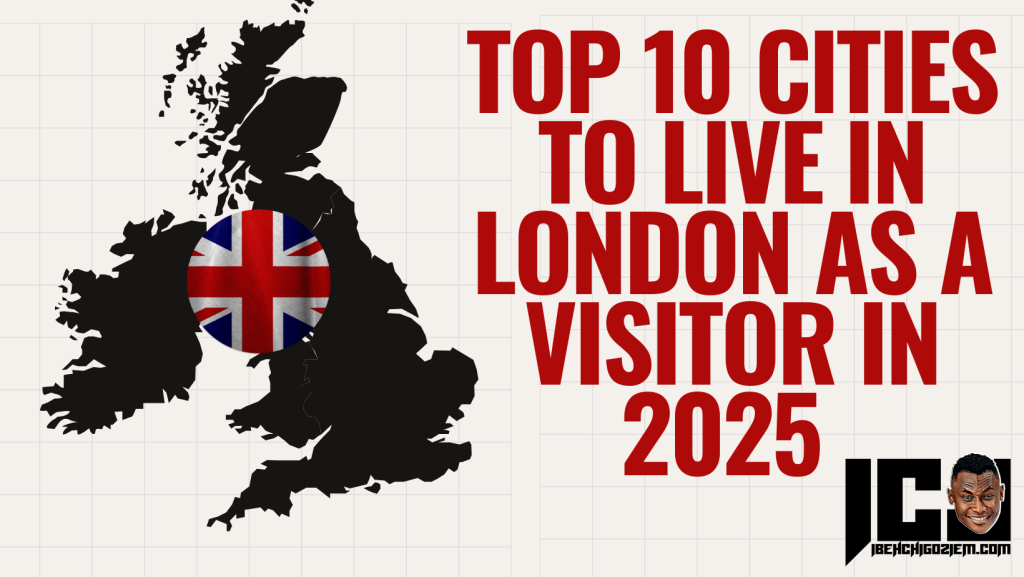Top 10 Cities To Live In London As A Visitor 2025
Living in London is a rich and multifaceted experience, blending centuries-old traditions with cutting-edge modernity.
London is the capital of the United Kingdom and one of the world’s most influential global cities. London offers a unique lifestyle shaped by diversity, history, innovation, and culture.
Whether you’re a student, professional, artist, or tourist-turned-resident, here’s a detailed look at what life in London is really like.
Brief History of London
London, the capital of England and the United Kingdom, is a city with a rich and layered history that stretches back over 2,000 years.
It has grown from a small Roman settlement into one of the most important cities in the world, known for its influence in politics, culture, finance, and the arts.
London was founded by the Romans in around 43 AD and was called Londinium. Located on the River Thames, it quickly developed into a major port and commercial hub.
By the 2nd century, the city had stone walls, markets, temples, and a population of around 45,000. However, after the fall of the Roman Empire in the 5th century, Londinium declined and was mostly abandoned.
In the centuries that followed, the Anglo-Saxons settled nearby and slowly brought the city back to life.
ALSO, READ Top 10 Cities To Live In Nigeria As A Visitor In 2025
During the 9th and 10th centuries, London was often attacked by Vikings and King Alfred the Great eventually secured the city, strengthened its defences, and re-established it as an important centre for trade and governance. By the 11th century, London was growing in size and importance.
After the Norman Conquest in 1066, William the Conqueror built the Tower of London to maintain control.
The medieval period saw London become the heart of political power in England. Though the official capital remained in Westminster, the City of London became the centre of commerce and trade.
The population grew steadily, though life was often difficult due to poor sanitation, plagues, and fires. One of the most devastating events was the Black Death in 1348, which killed about a third of the population.
The Tudor and Stuart periods are referred to as Early Modern London. This period saw London thrive. Under Elizabeth I, it became a major cultural and economic centre.
The works of William Shakespeare and the growth of the theatre scene reflected the city’s cultural energy. However, disaster struck in 1665 with the Great Plague, followed by the Great Fire of London in 1666, which destroyed much of the old city. Rebuilding efforts led to a more modern urban layout, with wider streets and stone buildings.
In the 18th and 19th Centuries, during the Georgian and Victorian eras, London expanded rapidly. The Industrial Revolution brought railways, factories, and a population boom.
During this period, London became the capital of the vast British Empire. Although the city flourished economically, it also faced challenges such as overcrowding, pollution, and poverty.
Social reformers and writers like Charles Dickens highlighted these conditions in their work.
In the 20th Century till date, London has been experiencing rapid development in many phases, this is due to the great destruction during World War.
London suffered heavy bombing during World War II, particularly in the Blitz of 1940–41. After the war, the city was rebuilt and experienced major social changes, including immigration that made it one of the most multicultural cities in the world. London became a global leader in finance, fashion, and the arts.
ALSO, READ Top 10 Best Real Estate Agencies & Realtors In Nigeria 2025
Iconic events such as the 2012 Olympics and the development of modern landmarks like the London Eye and the Shard reflect its continued evolution.
From its Roman roots to its modern global status, London has remained a city of resilience, reinvention, and influence. Its rich history continues to shape its identity and role on the world stage.
Here is the general overview of Nigeria in terms of Hospitality, Tourism, infrastructure, and security.
1. Diversity and Multiculturalism
London is one of the most cosmopolitan cities in the world. Over 300 languages are spoken here, and nearly every nationality is represented.
Neighbourhoods like Brixton, Southall, and Brick Lane are famous for their Caribbean, South Asian, and Bangladeshi communities, respectively, while areas like Kensington and Chelsea are home to diplomats and expats from around the globe.
In London, there is easy access to global cuisines, cultures, and festivals, although integration can take time, especially in closed-knit areas.
2. Employment and Economy
London is a hub for finance, media, tech, law, education, and the arts. It houses the headquarters of global companies and offers countless job opportunities. However, competition is fierce, and the cost of living requires a solid income.
3. Education and Learning Opportunities
From world-renowned institutions like University College London (UCL), King’s College London, and London School of Economics (LSE) to a wide variety of public and private schools, London offers excellent educational options.
Generally, London gives access to leading global research and learning facilities with Multilingual and international curriculum options for visitors who come for educational purposes.
It is worth noting that, despite London being open to education, private education can be expensive; however, public schools vary by area and can be of very high quality.
4. Transportation and Mobility
The London Underground (Tube), buses, trams, Overground, and rail services make commuting in London convenient. The Oyster card and contactless payments simplify access.
London is one of the most connected cities in the world in terms of road networking, with 24-hour services on some lines during weekends, making it very easy for visitors and indigenous.
5. Housing and Cost of Living
London is highly expensive, particularly when it comes to housing. Central London offers convenience but comes at a premium, while outer boroughs offer better affordability.
The cost of accommodation ranges from £1,200 – £2,500, depending on the location, however, house-sharing is advisable for visitors in order to save costs.
6. Culture and Entertainment
From West End theatre shows and world-class museums (many of which are free), to music festivals and pop-up art galleries, life in London is culturally vibrant. Whether you’re a history buff or a party-goer, there’s something for you.
There are cultural spots such as the British Museum, Tate Modern, V&A Museum, Royal Opera House, Shakespeare’s Globe, and Barbican, to mention a few.
7. Nature and Green Spaces
Despite being a bustling metropolis, London is filled with parks and green areas where visitors can relax.
Many London visitors or residents use these spaces for jogging, yoga, picnics, and outdoor sports.
8. Safety and Security
London is generally safe, especially in areas like Richmond, Kensington, and Greenwich.
Petty crimes like pickpocketing do occur, especially in crowded areas. Hence as a visitor avoid secluded parks at night, be alert in tourist-heavy spots and ensure that you use apps like Uber when it is late at night.
9. Healthcare
The NHS (National Health Service) provides free healthcare for UK residents, including doctor visits and emergency services. Private healthcare is also available for faster access.
10. Weather and Environment
London has a temperate maritime climate, with mild summers and cool winters. It is of necessity for visitors coming from the hot zones to take note of the London weather to visit when the weather is a bit favourable.
Here are tips on the kind of weather in London and when to expect it.
Summer (June–August): 18–25°C, long daylight
Winter (December–February): 0–8°C, early sunsets
Rain: Frequent but usually light—carry an umbrella.
11. Language and Communication
English is the dominant language, but you will hear many others due to London’s diversity. Most services, especially in tourist and central areas, offer multilingual support for non-native English speakers
Language schools and courses are widely available in London for tourists so that they can communicate easily.
Also, communities often support newcomers with guides in their native languages.
12. Social Life and Community
Making friends in London takes time, but it becomes easier if you join clubs, meetups, or professional networks. You can also join gyms, hobby groups, or religious centres to make friends.
13. Digital Life and Connectivity
London is one of the most digitally advanced cities in Europe.
You have access to free Wi-Fi in most public areas with high-speed broadband, widespread mobile coverage and mobile payment accepted almost everywhere.
Top 10 cities to stay in London as a Visitor/immigrant in 2025
London is a city of dreams—steeped in history, bustling with modernity, and rich in culture. Whether you’re in town for a short vacation or a long stay, choosing where to stay can greatly affect your experience.
London isn’t made up of separate cities, but rather 32 boroughs, each offering unique advantages to travellers.
In this article, we explore the top 10 places to live in London as a visitor in 2025, evaluating them based on security, hospitality, amenities, affordability, tourist attractions, weather, and language accessibility.
Here is the list of the top 10 cities to live in London as a visitor in 2025
- Kensington and Chelsea
- Westminster
- Camden
- Greenwich
- Southwark
- Richmond upon Thames
- Hackney
- Hammersmith and Fulham
- Islington
- Waltham Forest
1. Kensington and Chelsea
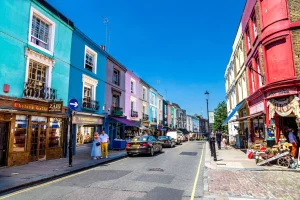
Kensington and Chelsea is a royal borough in West London, known for its elegance, affluence, and cultural landmarks.
It is home to world-famous attractions such as Kensington Palace, the Royal Albert Hall, and the Natural History Museum.
The borough boasts beautiful garden squares, luxury shopping on King’s Road and High Street Kensington, and prestigious residential areas like Notting Hill and South Kensington.
With its rich history, diverse communities, and vibrant arts scene, Kensington and Chelsea stand as one of London’s most desirable and iconic areas, blending heritage and modern living in a uniquely sophisticated atmosphere.
Kensington and Chelsea are synonymous with prestige and elegance. It’s home to several of London’s most famous attractions, such as the Natural History Museum, the Victoria and Albert Museum, Kensington Palace, and the upscale Harrods department store.
Security
One of London’s safest boroughs, well-patrolled and affluent.
Hospitality
Hosts some of the top-rated hotels and Airbnb accommodations with excellent customer service.
Amenities
High-end shopping, restaurants, and cultural venues.
Affordability
Quite expensive, better for visitors who don’t mind splurging.
Tourist Attractions
A tourist magnet with museums, parks, and palaces.
Weather
Generally consistent with London’s temperate climate.
Language
Very international; English widely spoken, but many multilingual services available.
2. Westminster

Westminster is the beating heart of London’s political and cultural heritage. Home to Big Ben, Buckingham Palace, Trafalgar Square, and Westminster Abbey, it offers tourists direct access to iconic locations.
Westminster is the political and historic heart of London, home to many of the UK’s most iconic landmarks and government institutions.
It houses the Houses of Parliament, Big Ben, Westminster Abbey, and 10 Downing Street, the official residence of the Prime Minister. As a borough, Westminster also includes Buckingham Palace, Trafalgar Square, and parts of the West End.
It also plays a central role in national ceremonies and royal events. Rich in history and architecture, Westminster is both a centre of political power and a major tourist destination, blending tradition with the vibrant energy of central London.
Security
High police presence due to government buildings.
Hospitality
A mix of high-end and budget-friendly hotels, friendly staff and multi-lingual services.
Amenities
Excellent public transport, dining, and shopping.
Affordability
Mid to high range, but deals can be found in off-peak seasons.
Tourist Attractions
Almost every key site is a short walk or tube ride away.
Weather
Slightly cooler due to proximity to the Thames, but manageable.
Language
English dominates, but tourist-focused services provide translations and guides.
3. Camden
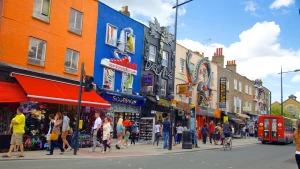
Camden is a vibrant and diverse borough in North London, known for its alternative culture, music scene, and lively markets.
Camden Town is the heart of the area, famous for its eclectic shops, street food, and live music venues like the Roundhouse and Electric Ballroom.
The borough also includes leafy areas such as Hampstead and Primrose Hill, offering stunning views of the city. Camden is a hub for artists, musicians, and creatives, with a strong sense of individuality and community. Its mix of historic charm, cultural richness, and youthful energy makes it one of London’s most dynamic areas.
Security
Generally safe, though some nightlife areas can get rowdy.
Hospitality
Trendy boutique hotels, hostels, and Airbnb options.
Amenities
Great shopping, food stalls, pubs, and alternative fashion outlets.
Affordability
More affordable than central boroughs.
Tourist Attractions
Camden Market, London Zoo, Regent’s Park.
Weather
Mild; pleasant for canal walks and outdoor markets.
Language
English is prevalent, with a diverse community of residents and travellers.
4. Greenwich

Greenwich is a historic borough in southeast London, renowned for its maritime heritage and role in global timekeeping. It is home to the Prime Meridian, where Greenwich Mean Time (GMT) originates, located at the Royal Observatory in Greenwich Park.
The area features several key landmarks, including the Old Royal Naval College, the National Maritime Museum, and the Cutty Sark, a preserved 19th-century clipper ship.
Greenwich combines rich history with natural beauty, offering expansive green spaces and panoramic views of the River Thames and Canary Wharf.
The borough also hosts a popular market, charming Georgian architecture, and a strong sense of community.
As a UNESCO World Heritage Site, Greenwich blends science, history, and culture, making it one of London’s most fascinating and picturesque districts.
Security
Very safe, family-friendly and calm.
Hospitality
Warm and welcoming B&Bs and boutique hotels.
Amenities
Cafés, historical museums, and boat tours.
Affordability
Very reasonable for the quality of experience.
Tourist Attractions
Cutty Sark, National Maritime Museum, Greenwich Market.
Weather
More open space, so slightly cooler but very enjoyable.
Language
English-dominant tourist services in multiple languages.
5. Southwark
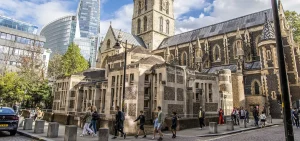
Southwark is a historic borough in central London, located south of the River Thames. It is one of the city’s oldest areas, with roots dating back to Roman times.
Presently, Southwark is known for its cultural landmarks and vibrant atmosphere. The iconic Tower Bridge and Shakespeare’s Globe Theatre are key attractions, along with the Tate Modern and Borough Market, one of London’s oldest and most popular food markets.
The borough combines modern development with deep historical significance, seen in sites like Southwark Cathedral and The Shard, the tallest building in the UK. With its mix of arts, history, and urban life, Southwark is a dynamic area that captures the essence of both old and new London.
Security
Generally safe, especially near the river.
Hospitality
Excellent riverside hotels and serviced apartments.
Amenities
Modern dining, food markets, and cultural spaces.
Affordability
Moderately priced; good value for central London.
Tourist Attractions
South Bank, Tower Bridge, HMS Belfast.
Weather
Riverside breeze, great for scenic walks.
Language
English is widely spoken; very tourist-friendly.
6. Richmond upon Thames
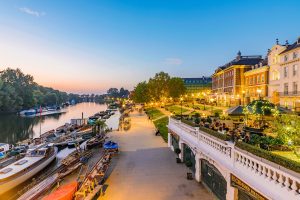
Richmond upon Thames is a picturesque and affluent borough in southwest London, renowned for its green spaces, historic landmarks, and riverside charm.
It is the only London borough that spans both sides of the River Thames, offering scenic views and tranquil settings. Richmond Park, the largest of London’s Royal Parks, is famous for its ancient woodlands and free-roaming deer.
The borough also includes the Royal Botanic Gardens at Kew, a UNESCO World Heritage Site celebrated for its vast collection of plants.
Richmond town itself features elegant Georgian architecture, boutique shops, and riverside pubs, creating a village-like atmosphere. The area has strong royal connections, with Hampton Court Palace nearby, and a rich cultural scene, including theatres and galleries.
Popular with families and professionals, Richmond upon Thames offers a perfect blend of nature, history, and high quality of life, making it one of London’s most desirable places to live and visit.
Security
Extremely safe and family-oriented.
Hospitality
High-quality guesthouses and small hotels.
Amenities
Upscale restaurants, artisan cafés, riverside pubs.
Affordability
Leaning toward upper-middle cost.
Tourist Attractions
Kew Gardens, Richmond Park, Hampton Court Palace.
Weather
Cooler but clean, fresh air from green spaces.
Language
English, but many residents and businesses are multilingual.
7. Hackney
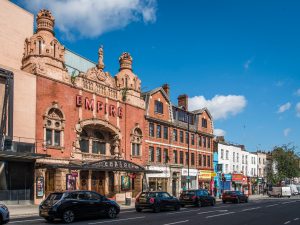
Hackney is a diverse and rapidly evolving borough in East London, known for its creativity, cultural vibrancy, and rich history. Once an industrial and working-class area, Hackney has transformed into a hub for artists, entrepreneurs, and young professionals.
The borough is home to a thriving arts and music scene, with numerous galleries, independent theatres, and live music venues.
Areas like Shoreditch and Dalston are celebrated for their trendy bars, street art, and dynamic nightlife. Hackney also offers green spaces such as London Fields and Victoria Park, providing a balance of urban energy and outdoor leisure.
Historically significant buildings like Hackney Empire and St Augustine’s Tower reflect its heritage. The borough embraces multiculturalism, with diverse communities contributing to its vibrant food, fashion, and festival scenes. With its blend of old and new, Hackney represents the spirit of modern London—creative, inclusive, and constantly reinventing itself.
Hospitality
Cool Airbnb lofts, design-forward hotels.
Amenities
Vibrant coffee culture, music venues, and vintage shops.
Affordability
One of the more affordable inner-London options.
Tourist Attractions
Street art, indie galleries, urban parks.
Weather
Generally mild, great for cycling and walking.
Language
English primarily, but a very international crowd.
8. Hammersmith
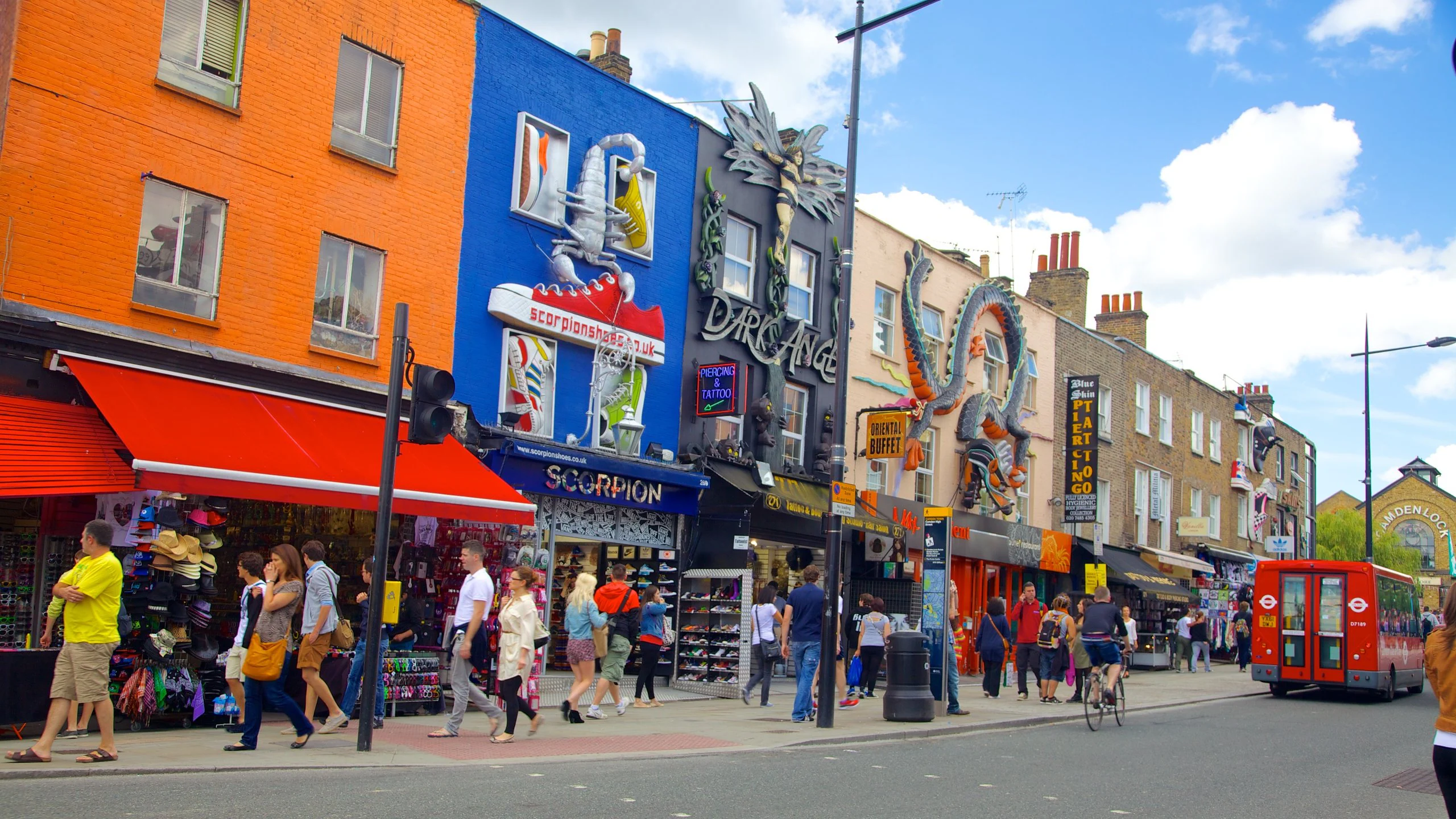
Hammersmith is a lively and diverse borough in West London, known for its mix of residential charm, commercial hubs, and cultural venues.
Hammersmith, a key transport and business centre, features the famous Hammersmith Apollo, a top entertainment venue.
It offers a more residential feel, with leafy streets, stylish cafes, and riverside walks. The borough is also home to two major football clubs—Chelsea FC and Fulham FC. With its blend of urban energy and village-like neighbourhoods, Hammersmith appeals to professionals, families, and creatives alike, offering a dynamic yet comfortable lifestyle close to central London.
Security
Safe, well-maintained neighbourhoods.
Hospitality
Mixture of chain and boutique hotels.
Amenities
Riverside pubs, large shopping centres, and walkable streets.
Affordability
More affordable than Westminster or Chelsea.
Tourist Attractions
Eventim Apollo, Thames Walks, Bishops Park.
Weather
Temperate, with plenty of green spaces.
Language
English-focused, but services cater to international guests.
9. Islington

Islington is a dynamic and culturally rich borough in North London, Known for its blend of historic charm, urban energy, and creative spirit.
Islington was once a rural village, it has transformed into one of London’s most desirable areas, popular with professionals, artists, and families.
The borough is characterised by elegant Georgian and Victorian terraces, especially around Canonbury and Barnsbury, and a vibrant street life centred on Upper Street, which offers an array of restaurants, cafes, boutiques, and bars.
Islington boasts a strong cultural scene, home to renowned venues such as the Almeida Theatre and Sadler’s Wells, one of the world’s leading dance theatres.
The borough has deep literary and political roots, having housed notable figures such as George Orwell and former Prime Minister Tony Blair.
Green spaces like Highbury Fields and the Regent’s Canal provide peaceful retreats, while excellent transport links make commuting easy.
With its rich history, diverse community, and thriving arts and food scenes, Islington strikes a balance between urban sophistication and a close-knit neighbourhood feel, making it a standout borough in the heart of London.
Security
Generally safe with community-focused policing.
Hospitality
Boutique hotels and quiet Airbnb options.
Amenities
Great for shopping, fine dining, and theatre.
Affordability
Mid-range, with some budget stays.
Tourist Attractions
Angel area, canal walks, and historic architecture.
Weather
Standard for London; suited for outdoor cafés.
Language
English, plus services for French, Spanish, and more.
10. Waltham Forest

Waltham Forest is a diverse and increasingly popular borough in northeast London, known for its rich cultural heritage, green spaces, and strong community spirit.
It gained recognition as the first-ever London Borough of Culture in 2019, celebrating its vibrant arts, music, and creative scenes.
The area includes neighbourhoods like Walthamstow, Leyton, and Chingford, each offering a unique mix of urban life and natural beauty. Walthamstow is especially notable for its street art, independent shops, and the famous Walthamstow Market—the longest outdoor market in Europe.
The borough also boasts access to Epping Forest and Walthamstow Wetlands, providing outdoor leisure and wildlife experiences. With ongoing regeneration and excellent transport links, Waltham Forest continues to grow as a dynamic, family-friendly destination.
Security
Safe and increasingly popular with young families.
Hospitality
Quaint guesthouses and budget hotels.
Amenities
Local markets, bakeries, and artist studios.
Affordability
One of the most affordable boroughs for visitors.
Tourist Attractions
Nature reserves, street art, and vintage shops.
Weather
Slightly more variable, greener with open skies.
Language
English-speaking community, with East London’s famous multicultural vibe.
Conclusion
London’s diversity means there’s no single “best” area for visitors—only the best for your type of trip. Whether you’re looking for history, art, nightlife, luxury, or tranquillity, the city offers a borough that matches your pace and priorities.
For first-time tourists, Westminster or Kensington and Chelsea offer unbeatable proximity to landmarks. If you’re staying longer or visiting for a more authentic experience, Hackney, Richmond, or Waltham Forest might be better fits.
Life in London is dynamic, inspiring, and full of opportunity—but it can also be overwhelming, fast-paced, and expensive. The city rewards those who are adaptable, open-minded, and ready to explore.
Whether you’re here for a few months or a lifetime, London offers an experience unlike any other city—where medieval history meets modern innovation, and where every street has a story.
Regardless of where you stay, the excellent public transport system makes it easy to explore every corner of this magnificent city.
